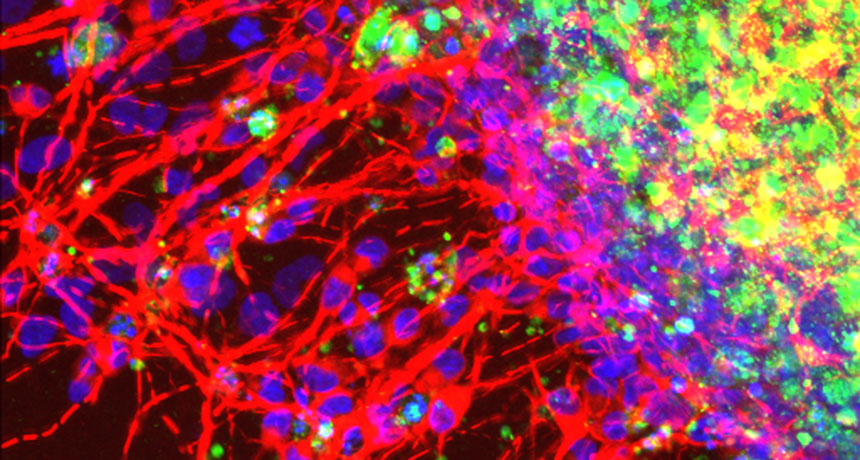Zika virus infects cells that make bone, muscle in lab tests

MIXED SIGNALS Minibrains grown in the lab form nerve cells (red) prematurely and show signs of dying cells (green) when treated with a signaling molecule called LIF. This molecule pours out of embryonic cranial cells after infection with Zika virus, and could harm brain development.
Rachel Greenberg







